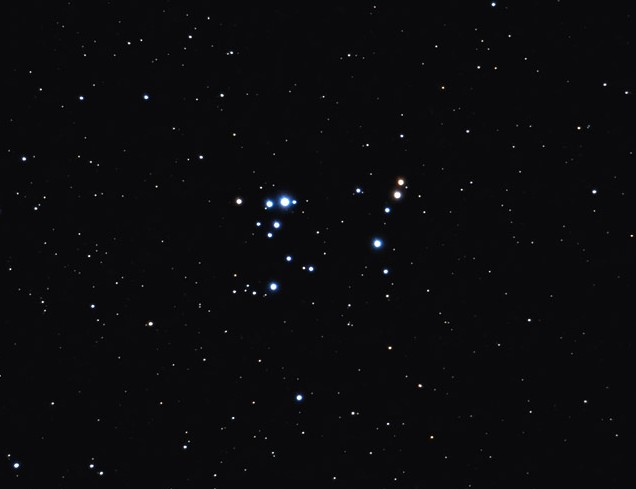
|
Credit & Copyright: Noel Carboni
Explanation:
For the mostly harmless denizens of planet Earth, the
brighter stars of open cluster
NGC 2169
seem to form a cosmic 37.
(Did you
expect 42?.)
Of course, the improbable numerical
asterism
appears solely by chance and lies at an estimated distance of 3,600
light-years toward the
constellation Orion.
As far as galactic or open star clusters go,
NGC 2169
is a small one, spanning about 7 light-years.
Formed at the same time from the same cloud of dust
and gas, the stars of
NGC 2169 are only about 8 million years old.
Such clusters
are expected to disperse over time as they
encounter other stars, interstellar clouds, and
experience gravitational tides while traveling through
the galaxy.
Over four billion years ago, our own Sun was likely formed
in a similar open
cluster of stars.
|
January February March April May June July August September October November December |
| ||||||||||||||||||||||||||||||||||||||||||||||||
NASA Web Site Statements, Warnings, and Disclaimers
NASA Official: Jay Norris. Specific rights apply.
A service of: LHEA at NASA / GSFC
& Michigan Tech. U.
Based on Astronomy Picture
Of the Day
Publications with keywords: open cluster - galactic cluster
Publications with words: open cluster - galactic cluster
See also:
- APOD: 2025 August 7 B The Double Cluster in Perseus
- APOD: 2025 April 28 B Gum 37 and the Southern Tadpoles
- Open Star Clusters M35 and NGC 2158
- APOD: 2025 February 25 B M41: The Little Beehive Star Cluster
- APOD: 2025 February 11 B The Spider and the Fly
- APOD: 2024 October 29 B NGC 602: Stars Versus Pillars from Webb
- NGC 7789: Caroline s Rose
